Volume 1, Issue 1
Displaying 1-8 of 8 articles from this issue
- |<
- <
- 1
- >
- >|
-
2002 Volume 1 Issue 1 Pages 6-10
Published: September 20, 2002
Released on J-STAGE: October 21, 2016
Download PDF (1120K)
-
2002 Volume 1 Issue 1 Pages 11-19
Published: September 20, 2002
Released on J-STAGE: October 21, 2016
Download PDF (1233K) -
2002 Volume 1 Issue 1 Pages 20-27
Published: September 20, 2002
Released on J-STAGE: October 21, 2016
Download PDF (1182K) -
2002 Volume 1 Issue 1 Pages 28-35
Published: September 20, 2002
Released on J-STAGE: October 21, 2016
Download PDF (1161K) -
2002 Volume 1 Issue 1 Pages 36-44
Published: September 20, 2002
Released on J-STAGE: October 21, 2016
Download PDF (1157K) -
2002 Volume 1 Issue 1 Pages 45-50
Published: September 20, 2002
Released on J-STAGE: October 21, 2016
Download PDF (5689K)
-
2002 Volume 1 Issue 1 Pages 51-55
Published: September 20, 2002
Released on J-STAGE: October 21, 2016
Download PDF (1096K) -
2002 Volume 1 Issue 1 Pages 56-60
Published: September 20, 2002
Released on J-STAGE: October 21, 2016
Download PDF (1119K)
- |<
- <
- 1
- >
- >|
